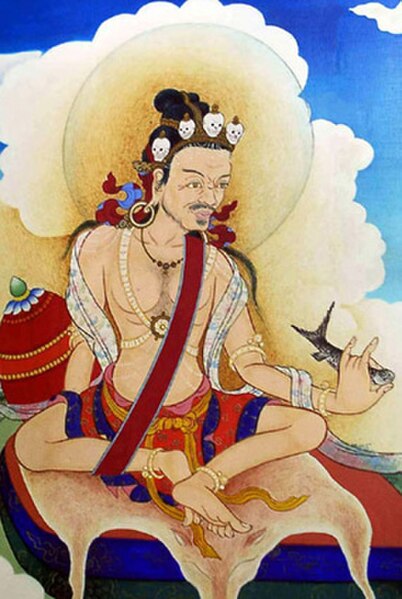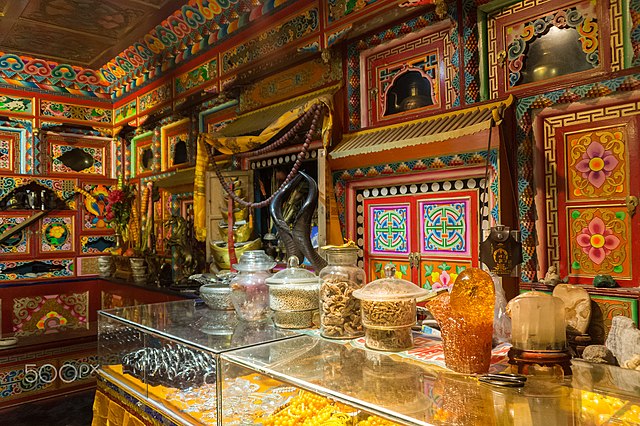Mahāmudrā literally means "great seal" or "great imprint" and refers to the fact that "all phenomena inevitably are stamped by the fact of wisdom and emptiness inseparable". Mahāmudrā is a multivalent term of great importance in later Indian Buddhism and Tibetan Buddhism which "also occurs occasionally in Hindu and East Asian Buddhist esotericism."
A scroll painting of Saraha, surrounded by other Mahāsiddhas, probably 18th century and now in the British Museum
Statue of the Guhyasamāja deity in union with consort (his "mahāmudrā") performing various mudrās (ritual hand gestures).
Tilopa
Maitripa
Tibetan Buddhism is a form of Buddhism practiced in Tibet, Bhutan and Mongolia. It also has a sizable number of adherents in the areas surrounding the Himalayas, including the Indian regions of Ladakh, Sikkim, and Arunachal Pradesh, as well as in Nepal. Smaller groups of practitioners can be found in Central Asia, Xinjiang, Inner Mongolia, and some regions of Russia, such as Tuva, Buryatia, and Kalmykia.
Inside of a Tibetan Buddhist monastery
Samye was the first gompa (Buddhist monastery) built in Tibet (775–779).
The Indian master Atiśa
The Tibetan householder and translator Marpa (1012–1097)








